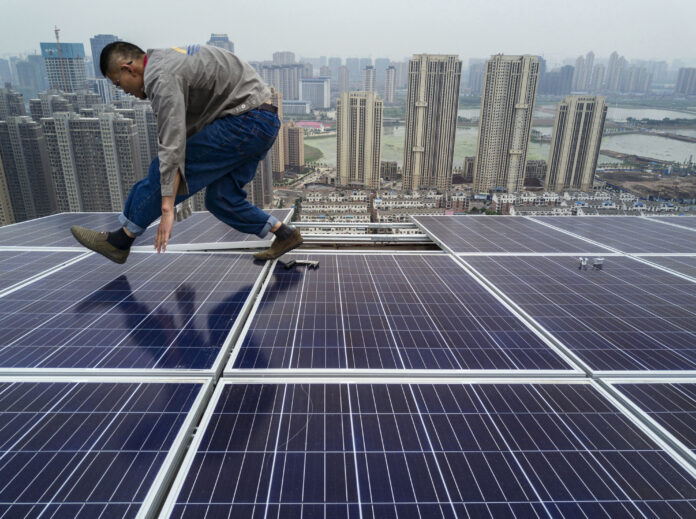The International Energy Agency said that the world’s greenhouse gas emissions grew last year at a lower rate than in the previous year, as the expansion of clean energy and electric vehicles helped to offset increased energy demand.
Global emissions causing climate change increased last year by 410 million tons, or 1.1 percent, the IEA said in its annual update report. In 2022, emissions grew by 490 million tons.
The growth of renewable energy is so great that the world’s output of CO2 from electricity production would have decreased last year if not for extreme drought that reduced the output from hydroelectric dams in many parts of the world. The reduced flow of water to turn hydro turbines forced many places to temporarily revert to fossil fuels to make up for the shortfall.
Kevin Frayer/Getty Images
Still, the tremendous global surge in solar and wind power sources helped to absorb new energy demand. The IEA’s analysis shows that the growth in clean energy from 2019 to 2023 was twice as large as the growth in fossil fuel sources despite world events that threatened to derail renewables.
“The clean energy transition has undergone a series of stress tests in the last five years—and it has demonstrated its resilience,” IEA Executive Director Fatih Birol said in a release accompanying the new report.
The COVID-19 pandemic and disruptions to the global energy market caused by Russia’s invasion of Ukraine had the potential to halt clean energy construction.
“Instead, we’ve seen the opposite in many economies,” Birol said.
The IEA said CO2 emissions from energy in the world’s advanced economies fell last year even as economies grew. A little more than half of the electricity that advanced economies consumed last year came from renewables and low-emission sources such as nuclear power, the first year that has happened.
However, the world’s energy transition is still far short of what is needed to reduce greenhouse gases to the point that would avert the most dangerous warming, and growth in clean energy sources alone does not necessarily bring down emissions.
For example, the IEA report shows the greatest increase in greenhouse gas emissions last year came from China even though China also leads the world in clean energy development. About 90 percent of new solar and wind power and 95 percent of electric vehicle sales last year came in China.
The IEA said energy efficiency efforts are lagging around the world, as are sales of cleaner appliances such as heat pumps. The IEA recommended greater support for clean energy development and efficiency measures, especially in developing economies.


